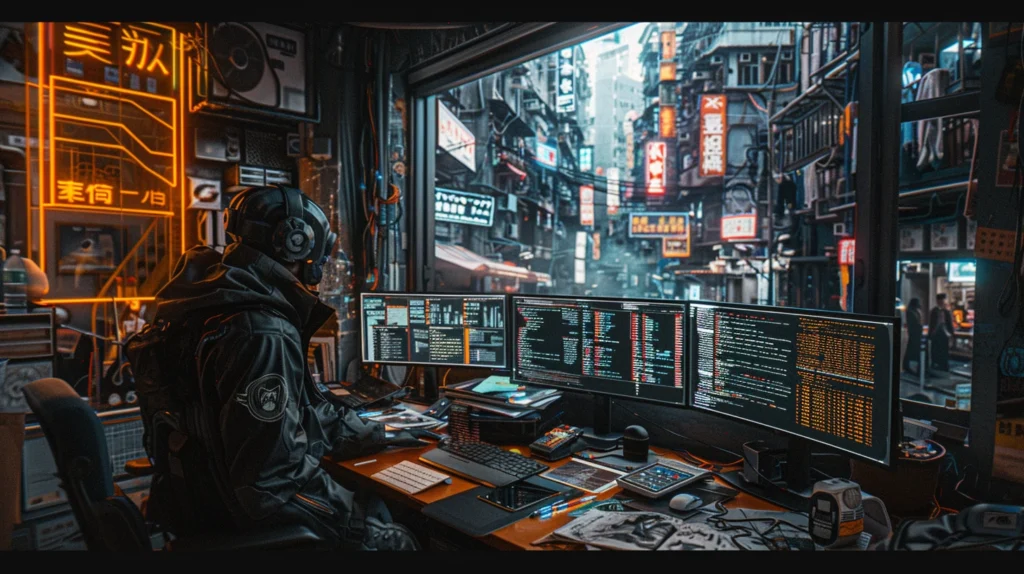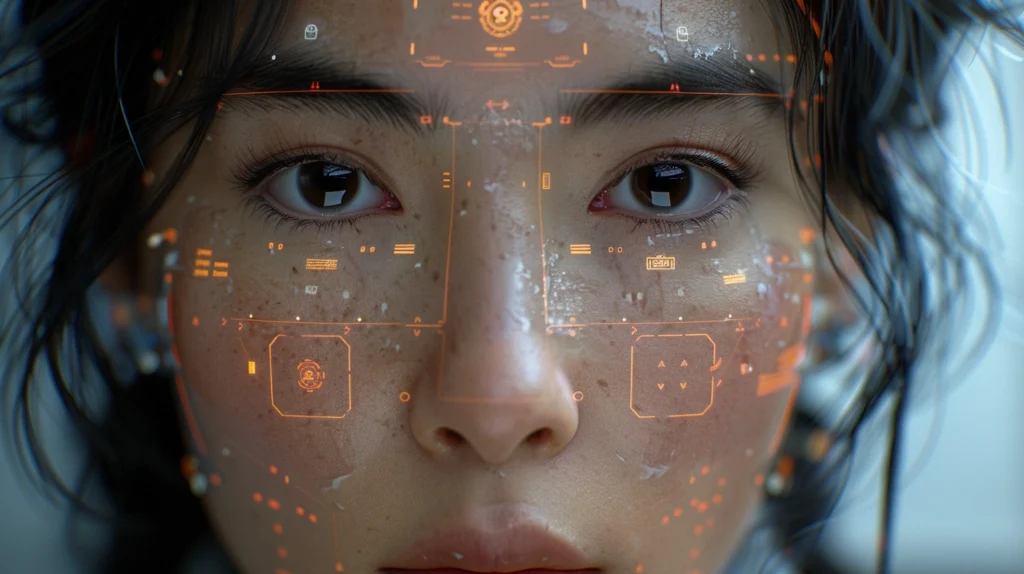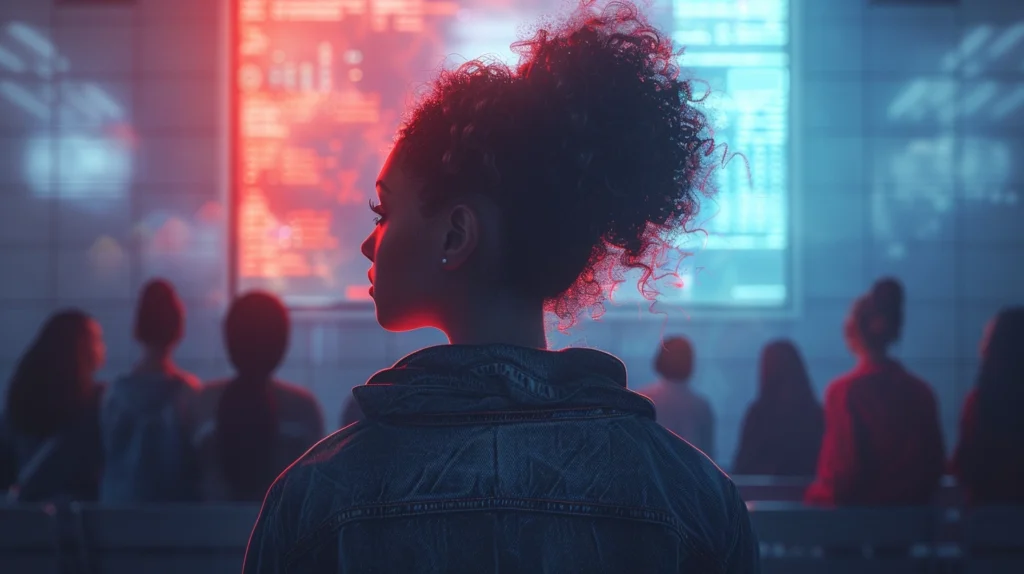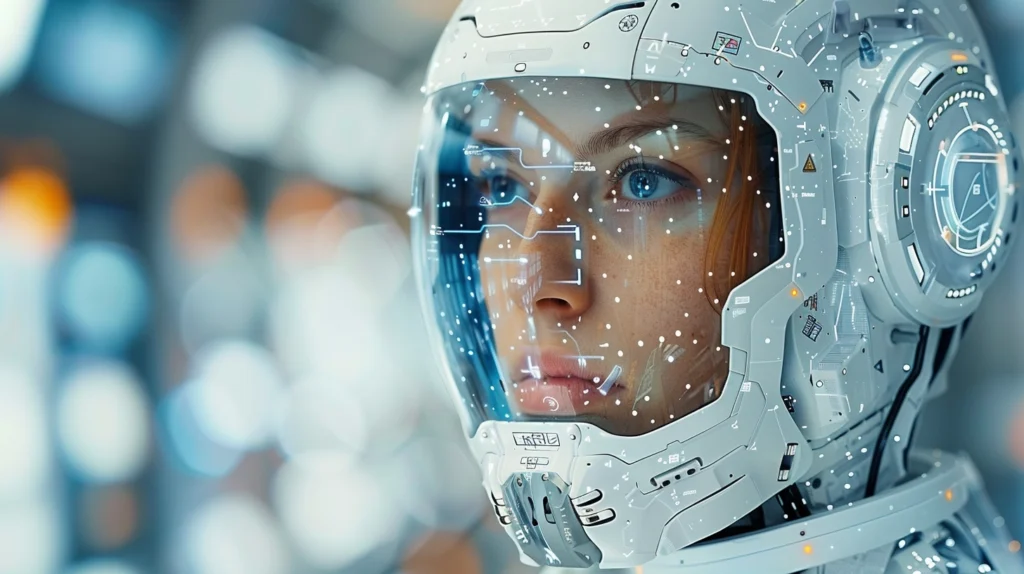Modernizing Voice Acting: The Role of AI in Advancing Voiceover Work

The voiceover industry has traditionally relied on human voice actors, which, while effective, come with limitations in terms of cost, time, and versatility.
The need for diverse, high-quality voiceovers across various platforms has outpaced the capabilities of traditional methods, leading to a demand for more innovative solutions.
AI voice technology has revolutionized voice acting, introducing voice cloning and advanced voice synthesis algorithms that produce AI-generated voices nearly indistinguishable from human speech.
This technology offers cost-effective, time-efficient, and highly versatile voiceover solutions for audiobooks, video games, virtual assistants, and e-learning.
The future of voiceover will not see AI replacing human actors but rather working alongside them, blending AI-generated voices with human creativity to create powerful and engaging audio experiences.
Key Takeaways
Transform your storytelling with AI-generated voiceovers.
Use this prompt to tailor voiceover solutions that captivate your audience and fit your brand’s unique voice.
Harnessing AI for voiceover work involves leveraging artificial intelligence technologies to generate spoken audio from written text, offering a scalable, cost-effective alternative to traditional voice recording methods. AI voiceover technology has advanced significantly, providing increasingly natural-sounding and expressive synthetic voices that can be customized for various applications, from audiobooks and e-learning materials to marketing videos and virtual assistants. Here’s a guide to exploring the integration of AI in voiceover production:
### Customizable Prompt for Harnessing AI in Voiceover Production
"How can [Company/Creator Name], seeking to enhance its audio content with high-quality voiceovers, utilize AI voiceover technology to produce engaging, natural-sounding audio for [Specific Applications, e.g., e-learning courses, audiobooks, commercials]? Consider the selection of AI voice models, customization of speech patterns, and the integration of emotional expressiveness to match the content’s tone and audience’s expectations."
#### Key Areas to Explore:
1. **Choosing AI Voice Models**: How can [Company/Creator Name] select the most appropriate AI voice models that align with the brand's image and the content's character, ensuring a natural and engaging listener experience?
2. **Customization and Control**: Discuss the extent to which AI voiceover technology allows for customization of speech patterns, pacing, and intonation to suit different types of content and achieve the desired impact on the audience.
3. **Emotional Expressiveness**: Explore the capabilities of AI voiceover technology in conveying emotional expressiveness and nuances, enhancing the authenticity and connection with the audience.
4. **Integration with Production Workflows**: How can AI voiceover technology be seamlessly integrated into existing audio production workflows, ensuring efficiency and consistency across projects?
5. **Quality Assurance and Editing**: Discuss strategies for quality assurance and editing AI-generated voiceovers to meet high standards of audio content, including the removal of errors and unnatural pauses.
6. **Ethical Considerations and Transparency**: Explore ethical considerations in using AI for voiceover, such as transparency about the use of synthetic voices and respecting intellectual property rights.
### Guide for Use:
- Personalize the prompt with specific details about your company or project, including the types of applications for which you require AI voiceovers.
- Use the insights generated to identify the best AI voiceover technologies and customization options that align with your content goals and audience preferences.
- Consider conducting pilot tests with different AI voice models and settings to fine-tune the voiceover output before full-scale production.
- Stay informed about the latest developments in AI voiceover technology and ethical guidelines to ensure your use of AI in voice production remains responsible and transparent.
Leveraging AI for voiceover work offers an efficient and flexible way to produce high-quality spoken audio, enabling content creators to expand their creative possibilities and engage their audience more effectively.The Transformative Impact of AI on the Voice Acting Industry
The voiceover industry is changing fast due to text-to-speech and voice recognition tech. This shift is because of artificial intelligence. The future of voice acting is now closely linked with AI, pushing both into a new era of growth.
Growth Trends in Text-to-Speech and Voice Recognition Markets
The industry with AI is growing quickly. The text-to-speech market is expected to jump from USD 2.0 billion in 2021 to USD 7.06 billion by 2028. These markets are key in leading voice acting’s evolution as AI technology speeds ahead.
Changing Dynamics: AI Voice Technology in Current Voiceover Work
AI in voice technology brings new flexibility to voiceover work. Now, films can be easily translated and dubbed in many languages. This helps with seamless global launches. Plus, AI ensures that voices keep their unique traits across all versions, showing the industry’s solid growth.
| Factor | Impact of AI Technology |
|---|---|
| Cost Efficiency | AI dubbing introduces cost savings in multilingual dubbing processes |
| Quality Enhancement | Maintains emotional pitch to preserve the impact of original performances |
| Speed and Efficiency | Enables simultaneous releases in various markets, maximizing revenue |
| Consistency | Maintains consistent voice portrayal across languages |
Embracing AI: A Strategic Move for Voice Artists
For voice actors, adopting AI is a smart move. It shows a future where voice acting gets better through innovation. The challenges of AI dubbing, like keeping cultural details and solving voice matching issues, are being worked on. This shows how the industry is adapting and staying strong.
The Role of AI-Generated Voice in Modern Media Production

As AI voice actors get better, their roles in media grow. They mark a new era of tech and creativity. Voice generation and voice synthesis are moving into areas once held by humans only.
Talks on AI voices getting better are increasing. They ask if AI can fully mimic human speech. Even with advances, a gap remains. Human actors offer warmth and subtlety that AI hasn’t matched yet.
AI Voice Actors vs. Human Emotion: The Current State of AI Voices
AI is better at copying vocal patterns, but struggles with full human emotions. Technologies like Speechify voice cloning show AI’s progress in sound. Yet, it’s still growing in expressing deep feelings.
Case Studies: AI Use in High-Profile Voiceover Projects
Recent case studies show AI voices in the main roles. AI recreated Robin Williams’ voice and replaced James Earl Jones as Darth Vader. This shows how voice synthesis preserves memories and future-proofs voices for media.
In conclusion, AI in media production is changing the future. AI voice actors are starting to match human performances. They boost production capabilities and save the voices of legends.
Challenges and Ethical Considerations in AI for Voiceover
The quick growth of AI brings many ethical dilemmas for voice actors. With AI’s ability to copy human voices, it’s hard to tell what’s real or not. This creates a heated debate about using artificial voices ethically. Voice talent, crucial for storytelling, now faces new chances and risks, including malicious use.
Important gatherings like the VOICE & AI conference share voice actors’ worries, pushing for better protection. Hi-Rez Studios added a contract term about voice simulating for sick actors. This shows the industry changing, but it also stresses the need for consent and respecting the artist’s wishes.
- Regulatory efforts aim to make AI ethical, but not everyone follows them.
- At Comic Con, the focus is on rights and protecting voice actors’ legacies.
- Teaching about AI in conversations helps voice talents adapt to this shift.
Efforts to tackle these ethical challenges grow, with more organizations using clear rules and being open about AI. Still, achieving ethical AI involves dealing with privacy, data protection, and biases in AI datasets.
| Core Principle | Statistic | Remark |
|---|---|---|
| Transparency in AI | 75% of developers prioritizing transparency | Essential for user trust |
| AI Systems’ Explainability | 60% of AI systems designed with explainability | Improves accessibility |
| Adoption of Ethical Guidelines | 80% of organizations adopting guidelines | Reflects growing responsibility |
| Data Protection Compliance | 65% of organizations compliant | Indicates awareness of privacy issues |
Accountability is becoming key in AI for voiceover, showing a clear future direction. More global cooperation is being called for to deal with AI’s ethical sides effectively. These moves are good news for an industry aiming for a balance between AI and voice talent.
How AI is Revolutionizing the Voiceover Industry with Efficient Production

The voiceover industry is drastically changing, thanks to generative AI. Tools like Synthesia Studio, Murf.ai, and Listnr are leading. They make creating multimedia content easier and more affordable for everyone. This is great for clients who need fast, top-notch work without spending a lot.
Innovative Tools and Platforms: From Script to Speech
Synthetic voice technology is making things faster and cheaper. Various platforms now quickly turn text into high-quality voiceovers. This change is especially helpful for making e-learning and training content.
People are really happy with today’s synthetic voices because they sound real. The tech behind this has grown a lot. It opens up many creative possibilities, thanks to its advanced AI and ability to handle multiple languages.
Advancements in Multilingual and Personalized Voice Options
Now, there are many voice options to pick from, making personalized voices possible. AI can keep voice quality consistent across different languages. This meets a big need for multilingual voice solutions.
Companies like Welocalize are key in offering help with over 250 dialects. They ensure messages are clear worldwide. The data below shows some big steps forward:
| Advancement | Impact | Future Prospects |
|---|---|---|
| Improved Synthetic Voice Quality | High user satisfaction; often indistinguishable from human voice | Full 3D avatars and enhanced NLP |
| Multilingual Consistency | Uniform voice quality across languages | Expansion to over 250 languages service through Welocalize |
| AI Avatars | Gestural and expressive enhancements | Real-time video generation capabilities |
AI in voiceover will keep growing, with even more improvements to come. We’ll see AI avatars that can show emotions and gestures. It promises a future where we can create videos in real-time.
The way we create content is radically changing. The dream of having personalized voices is now real. Thanks to new AI tech, the voiceover world is bursting with endless possibilities.
Protecting the Future: Voice Actors and Intellectual Property Rights

The video game industry’s shift towards AI presents new hurdles for voice actors like Cissy Jones. They must navigate the protection of their intellectual property rights amidst this change. The use of AI voices brings up important questions about the rights of voice talent.
With today’s tech, a voice actor’s unique sound can be copied for various uses without them. This has led to a growing worry about AI cloning or altering voices without fair pay or agreement. Thus, the urgent call to protect voice talent focuses on maintaining respect and ensuring artists flourish digitally.
A major move by Sag-Aftra and Replica Studios sets the stage for securing voice actor rights in AI-related projects. This deal shows how we can enjoy AI benefits while respecting actor rights. Though video game voiceovers don’t usually come with ongoing payments, new discussions could lead to lasting earnings for actors.
| Issue | Impact on Voice Actors | Progress & Solutions |
|---|---|---|
| Unauthorized Voice Cloning | Potential loss of control over voice use and compensation | Legal action and raising awareness |
| AI Replacing Human Actors | Job losses and reduced opportunities | Union agreements to create and use digital replicas ethically |
| No Residual Payments | Lack of ongoing income from successful titles | Exploring potential for licensing and continuous revenue streams |
| Protecting Intellectual Property | Maintaining reputation and personal brand | Education on rights and transparent contracts |
Morpheme’s advancements are both exciting and concerning for voice actors. They ponder the effects on their careers. Advocating for their rights and clear contracts with AI-using companies is essential to protect them.
The aim is for artists to control their work, making sure AI voices enhance rather than replace their skills. Ensuring intellectual property rights means more than fair pay—it’s about valuing the human element in voice acting in our digital future.
A Profile of Success: Voice Actors Thriving with the Help of AI

The voiceover industry is changing fast due to AI voice technologies. Leveraging AI is now key for voice actors wanting voiceover success. These pros are not just adapting; they’re using AI to reshape their voiceover careers.
Statistics reveal an interesting story: English is key in voice acting but leads in just one of the top five gaming revenue countries. This shows the big potential for AI in creating multilingual voiceovers. Especially since only 35% of game revenue in the top markets comes from English-speaking areas.
Voiseed, leading in AI dubbing, highlights the demand for such services. They see a big market opportunity, with $100 million directly accessible.
Recognizing its potential, the European Innovation Council supported Voiseed with 3 million EUR. This backs the value of leveraging AI in the voice industry.
Voiseed plans to expand its game dubbing to eight languages soon. Then, they aim to double this, and eventually offer services in thirty-two languages. This shows how AI transforms the voiceover industry.
| Year | Languages for Game Dubbing | Languages for Video Dubbing | Full Language Market Services |
|---|---|---|---|
| 2022 | Eight | – | – |
| 2023 | – | Sixteen | – |
| 2024 | – | – | Thirty-Two |
Providing content in many languages is crucial for voiceover success. The growth in voiceover work shows the benefits AI offers. It ensures voice actors can thrive in this digital age.

How You Can Start Your Own Side Hustle with AI Voiceover Technology
AI voiceover technology is changing the game in 2023. It opens up new side hustle opportunities for those interested in the voiceover market. People can now use their voices to earn money passively. By using platforms like ElevenLabs, you can upload your voice samples. Then, you get paid as your AI-generated voice is used in different projects. It’s a great way to combine your talent with technology, moving beyond a typical 9-to-5 job.
The AI voice industry is full of freelance chances that boost quality and attract clients. Jobs like AI Content Writers, AI Chatbot Developers, and AI Data Analysts show the growing opportunities. As more side hustles pop up, there’s a higher demand for skills in coding, analyzing data, and learning machines. These skills help people succeed in the side hustle world. To get started in this profitable area, checking out top AI side hustles can offer a good overview of the many options available.
But AI in side hustles isn’t just about voiceover work. It opens doors to many ways to make money. For those ready to explore, AI tools offer endless possibilities. From managing social media smartly to developing advanced chatbots and more, the options are vast. Keeping up with AI trends is crucial for finding new and profitable opportunities. AI voices are more than just a trend; they’re fundamental in shaping the future of side hustles.
FAQ
How is AI-generated voice impacting the voice acting industry?
Artificial intelligence is changing the voice acting world. It brings tools that boost work efficiency, offer passive income chances, and make casting easier. AI voices can fill in for voice actors or help when they can’t work. It’s great for translating scripts without losing the actor’s unique style. Even so, AI adds to the industry, it doesn’t take away from the human element. This keeps voice acting alive and benefits from real human feelings.
What are the growth trends in text-to-speech and voice recognition markets?
There’s huge growth in Text-to-Speech (TTS) and Speech and Voice Recognition markets. The TTS market is expected to jump from USD 2.0 billion to USD 7.06 billion by 2028. Meanwhile, the voice recognition market could reach USD 31.82 billion by 2025. These numbers show how AI is becoming more important in voice acting and the wider industry.
How are AI voice technologies changing the dynamics of current voiceover work?
AI voice tech is offering new styles and better production speed to the voiceover field. Voice artists can now quickly translate and produce in many languages. They can also give personal voice services and easily tweak scripts. This tech gives them new advantages, broadens their reach, and helps protect their creative rights.
What is the current state of emotion in AI voices compared to human voice actors?
AI voices are getting good at copying how humans talk, but they can’t fully match our emotional depth yet. They’re improving but work best alongside, not instead of, human actors. Humans bring feelings and shades to their voices that AI can’t just yet.
Can you provide case studies where AI has been used in high-profile voiceover projects?
For sure! AI recreated Robin Williams’ voice for a project after he passed away. James Earl Jones also handed over his Darth Vader voice to AI for future uses. These examples show AI voice tech’s potential and growing role in big media projects.
What are some ethical dilemmas surrounding the use of AI in voiceover?
Using AI in voiceover raises issues like copying voices without permission, respecting original work, and cloning voices of those who have passed away without okaying it first. The industry is trying to use AI ethically, to respect voice talents and keep storytelling human.
How is AI enhancing the efficiency of voiceover production?
AI is making voiceover production much faster by turning scripts into speech super quick. It also creates voices that fit many different project types. Voice artists now can make top-quality, multilingual content more efficiently. This opens up new creative chances and solutions for voiceover work.
In what ways can voice actors protect their intellectual property rights when working with AI?
Voice actors can keep their rights safe by learning about AI tech and its legal sides. They should work with groups that respect talent rights and make sure they’re paid fairly for AI work. Having clear contracts that protect their voice work from being used without permission is crucial.
How are voice actors thriving with the help of AI?
Voice actors are doing better than ever by using AI. It lets them do different kinds of voiceover work. This leads to more career growth and the chance to blend their skills with new technology.
How can individuals start a side hustle with AI voiceover technology?
Anyone wanting to start with AI voiceover can look into platforms like ElevenLabs. Here, you can upload your voice and make money from its use. It’s a great way to earn on the side and fits into the growing AI voiceover market.
Source Links
- https://www.popularaitools.ai/blog/best-ai-voice-generators-youtube-2023
- https://www.translate.video/content/voice-of-the-future-harnessing-translate-video-for-stellar-voice-overs-and-video-edits
- https://murf.ai/resources/ai-dubbing-in-movies/
- https://www.ics.ai/post/the-evolution-of-voice-ai-a-brief-history-and-future-predictions-1
- https://ncs.support/ethical-ai-development-ensuring-responsible-technology/
- https://marketscale.com/industries/software-and-technology/theres-a-bad-rep-for-ai-in-the-voice-acting-industry-but-voice-talents-can-embrace-ai-and-protect-their-rights/
- https://synthesys.io/ethics/
- https://www.welocalize.com/the-future-of-synthetic-voice-revolutionizing-multilingual-multimedia/
- https://www.theguardian.com/technology/2024/mar/29/how-ai-is-affecting-video-game-actors
- https://multilingual.com/ai-based-technology-to-revolutionize-audio-localization-industry/
- https://www.educationnext.in/posts/unlocking-extra-income-top-ai-side-hustles-to-start
